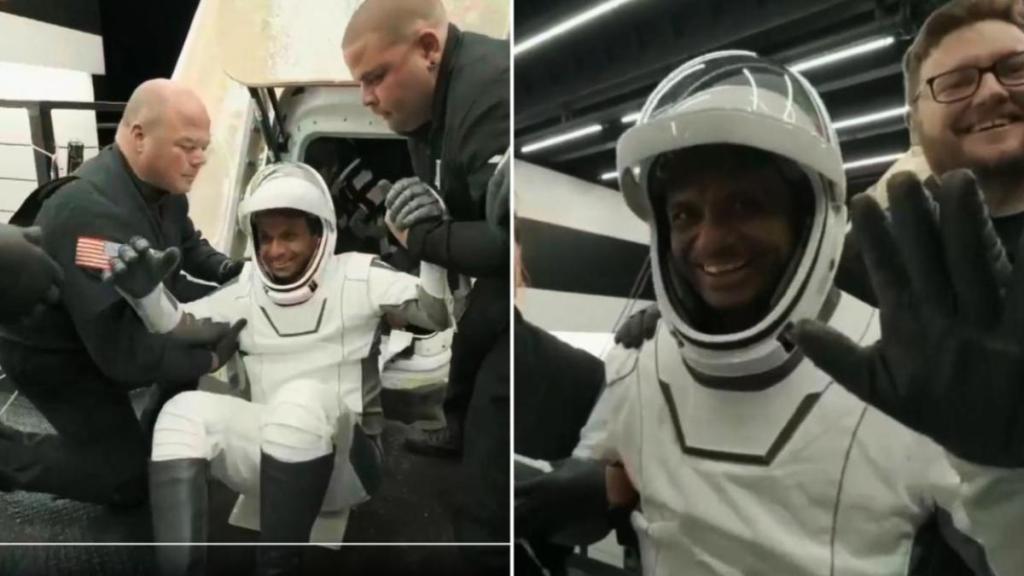The much-awaited SpaceX Dragon spacecraft safely splashed down in the Pacific Ocean off the coast of California at 3:01 PM IST on Tuesday, July 15. As SpaceX confirmed the safe arrival of the spacecraft in the Earth’s atmosphere, boats were immediately sent to retrieve the astronauts, and the ground team afterwards conducted medical assessments.
In the first video, after landing, Indian Astronaut Shubhanshu Shukla waved and smiled at the camera as he took the first step out of the Dragon spacecraft. received by the ground crew of the mission.
VIDEO | Axiom-4 Accomplished: Group Captain Shubhanshu Shukla steps out of the Dragon capsule beaming with pride, marking a historic return to Earth after 18 groundbreaking days aboard the International Space Station (ISS)
— Press Trust of India (@PTI_News) July 15, 2025
(Source: Third party)
(Full video available on PTI… pic.twitter.com/DzalvlAo1C
Shukla could be seen taking support from ground crew members to stand straight, reacclimatising himself to the Earth’s gravity. After completing 18 days on the mission, he became the first Indian astronaut to visit the International Space Station.
The Ax-4 mission crew, led by Commander Peggy Whitson and piloted by Shukla, spent over two weeks aboard the International Space Station (ISS). During their time, they conducted more than 60 scientific experiments spanning agriculture, medicine, water systems, and human physiology in microgravity. Their spacecraft, Grace, undocked from the ISS on Monday around 4:50 PM IST, completing its 22.5-hour journey back to Earth. This marked Axiom’s fourth human spaceflight and SpaceX’s 18th since 2020.
PM Modi welcomes Shubhanshu Shukla
Prime Minister Narendra Modi welcomed Shubhanshu Shukla and posted on X, “I join the nation in welcoming Group Captain Shubhanshu Shukla as he returns to Earth from his historic mission to Space. As India’s first astronaut to have visited International Space Station, he has inspired a billion dreams through his dedication, courage and pioneering spirit.”
He added, “It marks another milestone towards our own Human Space Flight Mission — Gaganyaan.”


